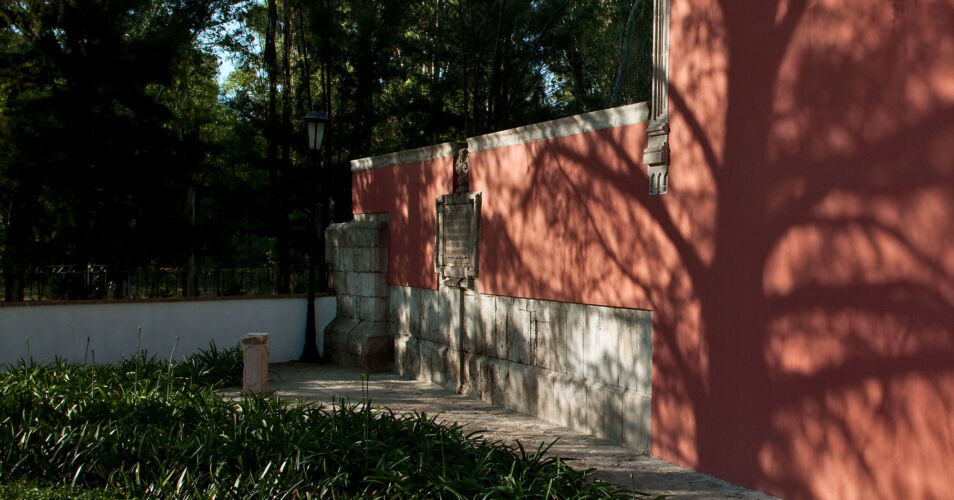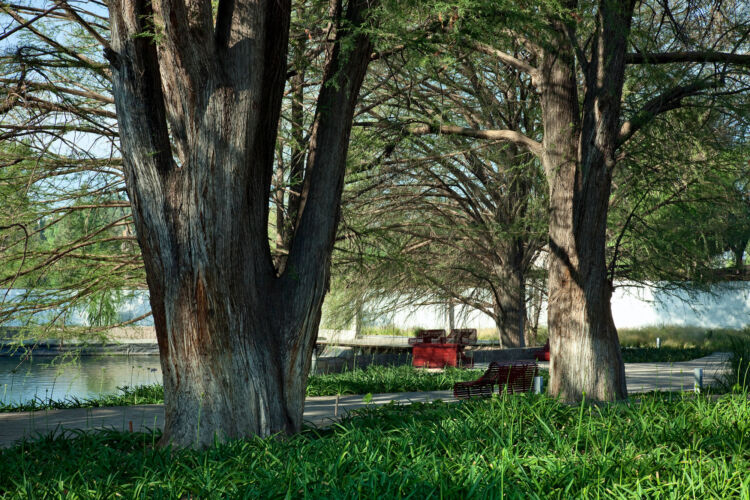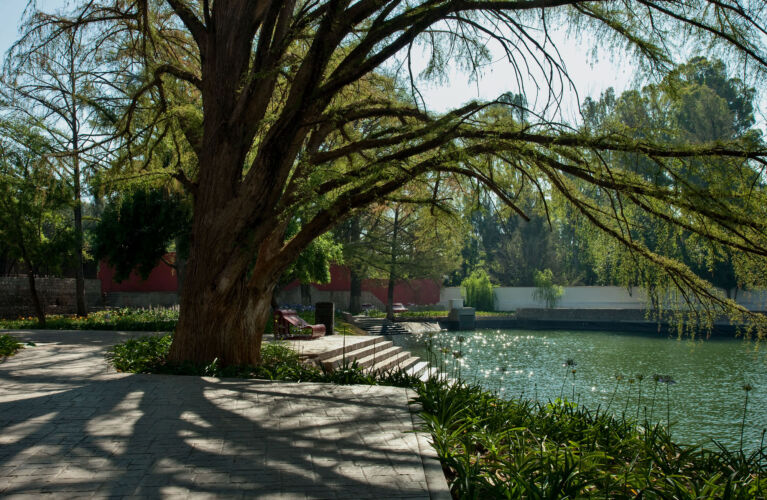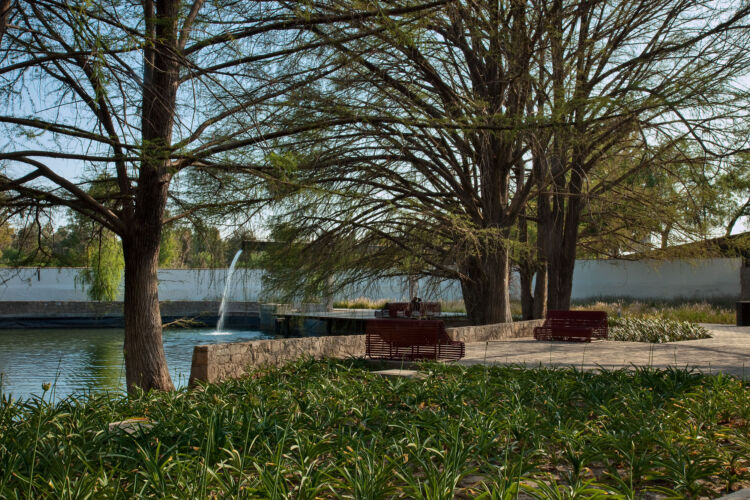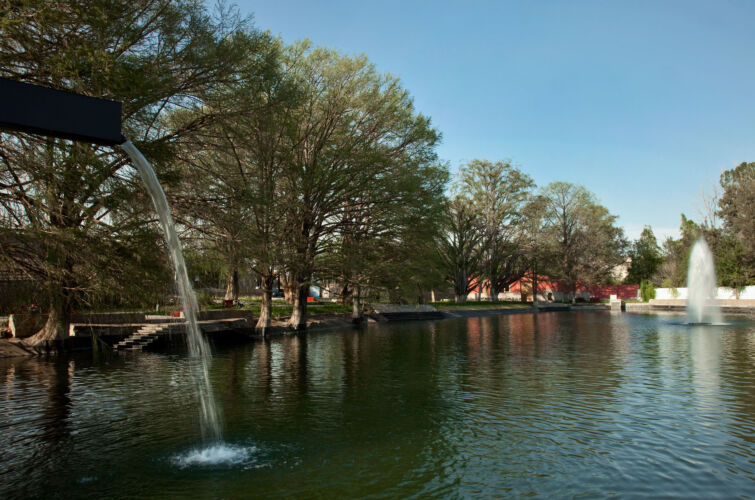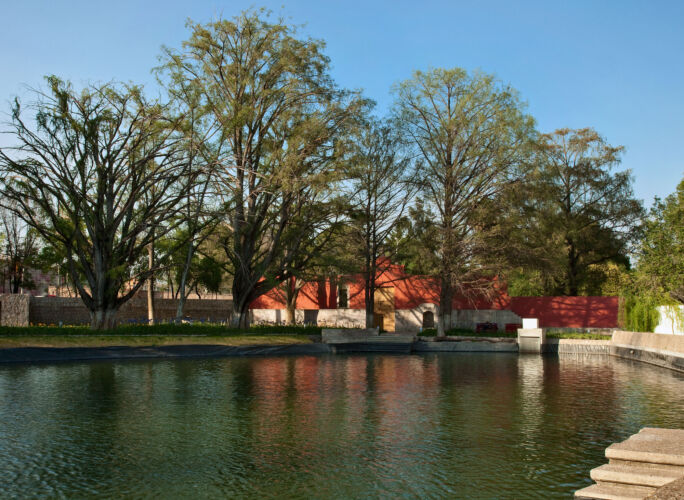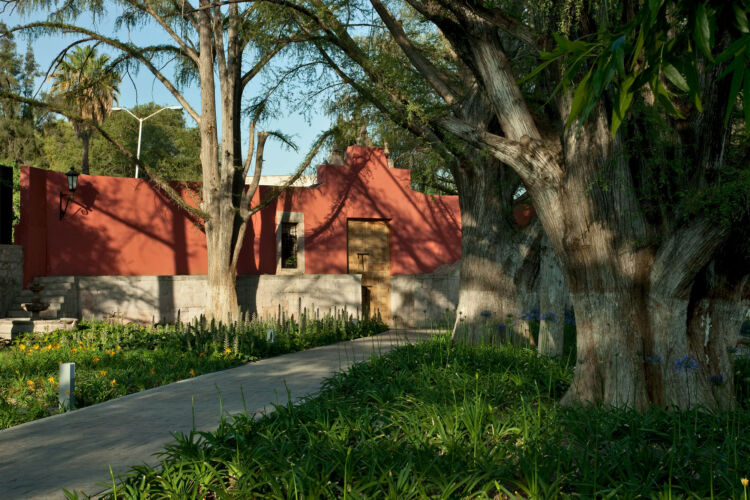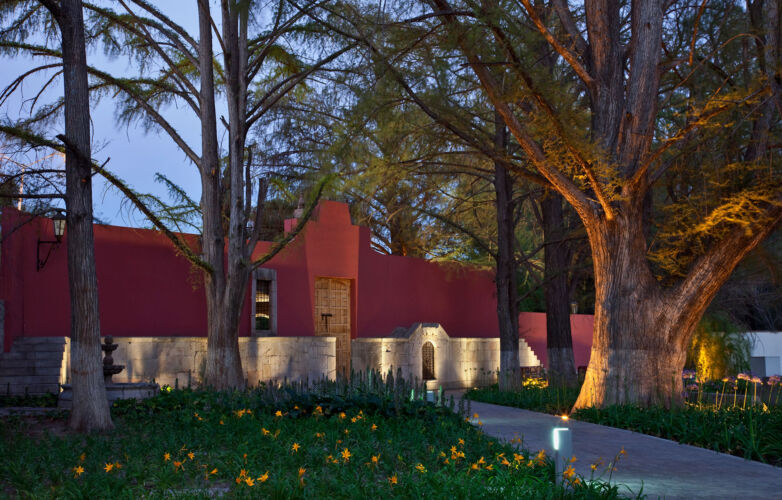Ojo de Agua del Obispo is a historic park, contained by walls and full of multiple symbols, being the origin of the city of Durango the most special one. In 1554, Spanish colonizers discovered a spring that had been used by indigenous communities. In 1728, Bishop Benito Crespo ordered the construction of a reservoir along with a system of irrigation canals so that drinking water could reach all households.
The main objective of the park is to consolidate a contemplative environment conducive to relaxation, meditation, and a sense of mystery.
GDU developed the restoration and adaptation project of the site; historic walls and gates were restored, as well as stairs and ramps of the dam. The body of water was reconfigured and relaxing spaces were created on various terraces. Special attention was given to the lighting of the monumental ahuehuetes (taxodium mucronatum), which offer great environmental and historical value, and provide the possibility of opening the space to nighttime events.
The main objective of the park is to consolidate a contemplative environment conducive to relaxation, meditation, and a sense of mystery, incorporating also a large body of water and a vast green and historic space, recovering memory, origin, and identity.

